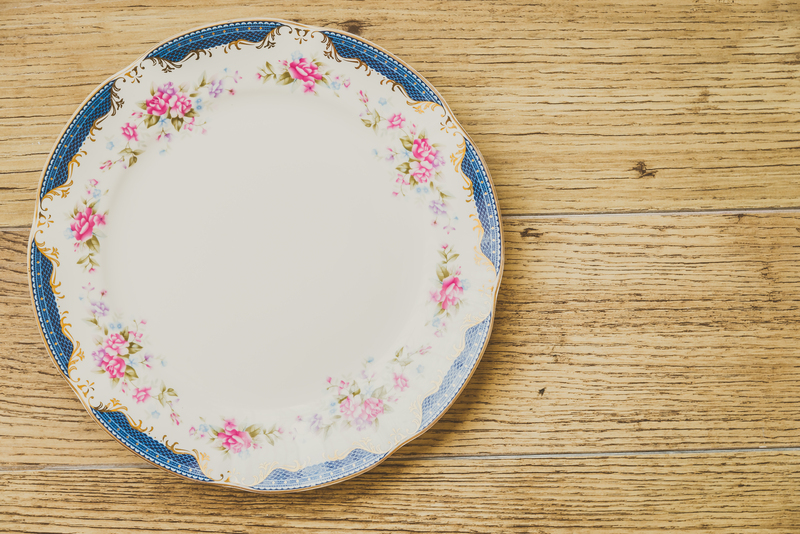Simple Steps to Slash Your Bulky Waste Item Costs
Managing bulky waste items can feel overwhelming, especially when costs start to pile up. Whether you've just renovated your home, upgraded your furniture, or cleared out years of hoarded items, bulky trash disposal can be an expensive part of the process. Luckily, there are practical, cost-effective solutions to minimize your bulky waste item costs and maximize your budget. In this comprehensive guide, we explore easy steps to both save money and help the environment.

Understanding Bulky Waste Items
Before diving into money-saving strategies, it's crucial to clarify what qualifies as bulky waste. This category covers large household items that don't fit in regular garbage bins, such as:
- Old furniture (sofas, beds, wardrobes)
- Household appliances (washing machines, refrigerators, ovens)
- Mattresses and bed frames
- Carpets and rugs
- Garden equipment (lawnmowers, large branches)
- Exercise machines
Municipalities and waste management companies typically charge extra fees for removing these objects. The good news is, with some smart planning, bulky waste disposal doesn't have to break the bank.
Why Are Bulky Waste Item Costs So High?
Disposing of bulky items involves extra logistical effort--such as specialized trucks, additional staff, and trips to transfer stations or recycling centers. Consider these factors:
- Transportation costs for large, heavy items
- Landfill, recycling, or tipping fees
- Special handling requirements for hazardous or electronic waste
- Labor involved in lifting and moving
Understanding these components can help you see why companies charge what they do. However, there are numerous ways to slash your bulky waste fees effectively.
Step 1: Audit Your Bulky Waste
Start by making a comprehensive list of all the bulky items you want to dispose of. This might seem simple, but being thorough prevents unnecessary pickups or costs. Consider:
- Measuring and noting quantities
- Separating items by category (metal, wood, electronics)
- Identifying items that could be reused or given away
This careful planning streamlines the disposal process and ensures you don't miss opportunities to reduce or avoid bulky waste collection charges.
Pro Tip: Take photos of all items to help you get the most accurate quotes from removal services.
Step 2: Consider Reusing and Repurposing
An excellent way to reduce large waste removal costs is to keep items out of the waste stream entirely. Ask yourself:
- Can an item be upcycled into something useful?
- Would it suit someone else's needs?
- Could you use it for another purpose?
For example, an old wardrobe could transform into a garage organizer, and a wooden bed frame can become garden edging. By getting creative, you save money and contribute to sustainability.
Bonus: Join local online communities devoted to recycling and upcycling. You might discover innovative ideas or people willing to take items for free!
Step 3: Sell or Donate Bulky Items
Before paying for bulky waste removal, explore selling or donating. Many items still have value, and someone else may be eager for a bargain.
Where to Sell or Donate:
- Online marketplaces (Facebook Marketplace, eBay, Craigslist)
- Local charity shops or thrift stores
- Non-profit organizations that collect used furniture and appliances
- Community groups on social media
Selling items offsets your disposal costs, while donating can qualify you for tax deductions or simply the satisfaction of helping others.
Tip: List items as "buyer collects" to avoid any transportation costs.
Step 4: Use Free or Low-Cost Collection Services
Many local councils offer periodic or annual free bulky waste collections for residents. Check your municipality's website to:
- Understand the rules and eligibility
- Book collection days well in advance
- Combine your pick-up with neighbors to maximize allowances
Even if free collection days are limited, they dramatically reduce large trash disposal costs in comparison to private services. Keep a calendar of bulk pick-up dates so you never miss the opportunity.
Pro Tip: Some councils take up to a certain number of items for free--so coordinate with neighbors to share quotas and save even more.
Step 5: Break Down and Minimize Bulky Waste
Disassembling large items can lower removal costs in multiple ways. Many companies charge by item or by volume. If you're able to break down furniture, remove table legs, or dismantle appliances (following safe practices), your items may qualify for cheaper collection tiers.
- Unscrew or take apart beds and tables
- Flatten cardboard from appliance boxes or packaging
- Separate materials (metal, wood, upholstery) where possible
Sometimes, you might fit partially dismantled items into your regular trash collection, bypassing the need for a special bulky waste pickup altogether.
Step 6: Compare Bulky Waste Collection Quotes
If you do need to use a private or commercial disposal company, always get multiple quotes:
- Describe the items accurately and provide photos
- Compare providers--not just for price, but reliability and eco-friendliness
- Ask about volume-based vs. item-based charges
Be wary of very low quotes; a reputable company will include insurance, responsible disposal, and recycling where possible. Request to see proof that your items won't illegally end up in landfill!
Step 7: Transport Bulky Waste Yourself
When feasible, self-disposal can be the cheapest option. Most towns and cities have recycling centers or landfills you can deliver to directly--often for a much lower fee than professional pickups.
What You Need:
- Access to a van or large vehicle (consider renting or borrowing)
- Knowledge of the site's operating hours and fees
- Protective gear for lifting, gloves, and tie-down straps
- Friends or family to help move heavy items safely
Before you go, check which items are accepted and if there are restrictions (especially for mattresses or electronic equipment). Remember, safety always comes first!
Step 8: Recycle Where Possible
Many bulky items have recyclable components. Metals, electronics, and certain plastics or woods can be dismantled and taken to specialized recycling centers. This approach not only slashes your bulky junk removal costs but protects the environment.
- Take metal frames and appliances to scrap metal yards (some will even pay you!)
- Drop electronics at e-waste facilities
- Call wood recyclers for untreated furniture
Recycling prevents items from clogging up landfills and sometimes lets you recover part of your costs.
Step 9: Pool Resources in Your Community
Organizing a neighborhood clean-up, joint skip hire, or group collection allows everyone to benefit from bulk rates. By splitting the cost, you can save hundreds compared to individual arrangements.
- Coordinate with neighbors for a community skip bin
- Organize a "bulky item swap" before disposal
- Request a group collection from a private hauler for better rates
Community action not only saves you money but strengthens neighborhood ties--and usually results in a cleaner, greener environment.
Step 10: Review Your Local Regulations
Finally, always check your local bulky waste disposal rules before scheduling pickups or transporting your items. Dumping waste illegally (so-called "fly-tipping") results in heavy fines. Many regulations exist on:
- Types of items accepted in regular vs. bulky collections
- Advance booking timelines for collection services
- Limits on the volume or number of permissible items
- Special rules for hazardous or electronic waste
Doing your homework protects you from extra costs and legal trouble.
Advanced Tips to Cut Bulky Disposal Costs Further
- Schedule Efficiently: Bundle your bulky item removal with other household waste projects to avoid multiple trips or pickups.
- Join "Freecycle" Groups: Sites like Freecycle, Craigslist "Curb Alert", and local Facebook groups are havens for people seeking used furniture or appliances--often removing it from your premises at no cost to you.
- Ask Retailers for Take-back: Some shops will take away your old item free (or at minimal cost) when delivering new furniture or appliances.
- Scrap for Cash: Certain bulky items, especially white goods, have valuable metals. Selling them to scrap dealers can mitigate or even offset disposal costs.
- Read Service Terms Carefully: Some collection apps and rubbish removal services sneak in extra surcharges for difficult access or last-minute bookings. Always check in advance.

Your Bulky Waste Item Costs: A Final Checklist
- Audit all bulky waste to avoid missing cost-saving opportunities
- Reuse or repurpose whatever you can
- Sell or donate items to give them a second life
- Use free or municipal collection services whenever possible
- Break down items to minimize space and expense
- Shop around for the best removal quotes
- Self-transport when it's safe and feasible
- Recycle to recover costs and protect the environment
- Team up with your community for discounted rates
- Stay compliant to dodge fines and extra fees
Conclusion: Start Slashing Your Bulky Waste Fees Today
Bulky waste disposal doesn't have to be a headache--or a hefty bill. By following these simple steps to slash your bulky waste item costs, you'll keep more money in your pocket and ensure your unwanted items are dealt with responsibly. A well-planned, efficient approach benefits your wallet, your home, and our planet. So next time you're faced with a pile of bulky rubbish, remember: saving starts with strategy!
Ready to cut your bulky waste disposal costs? Start with an audit and watch those fees drop!